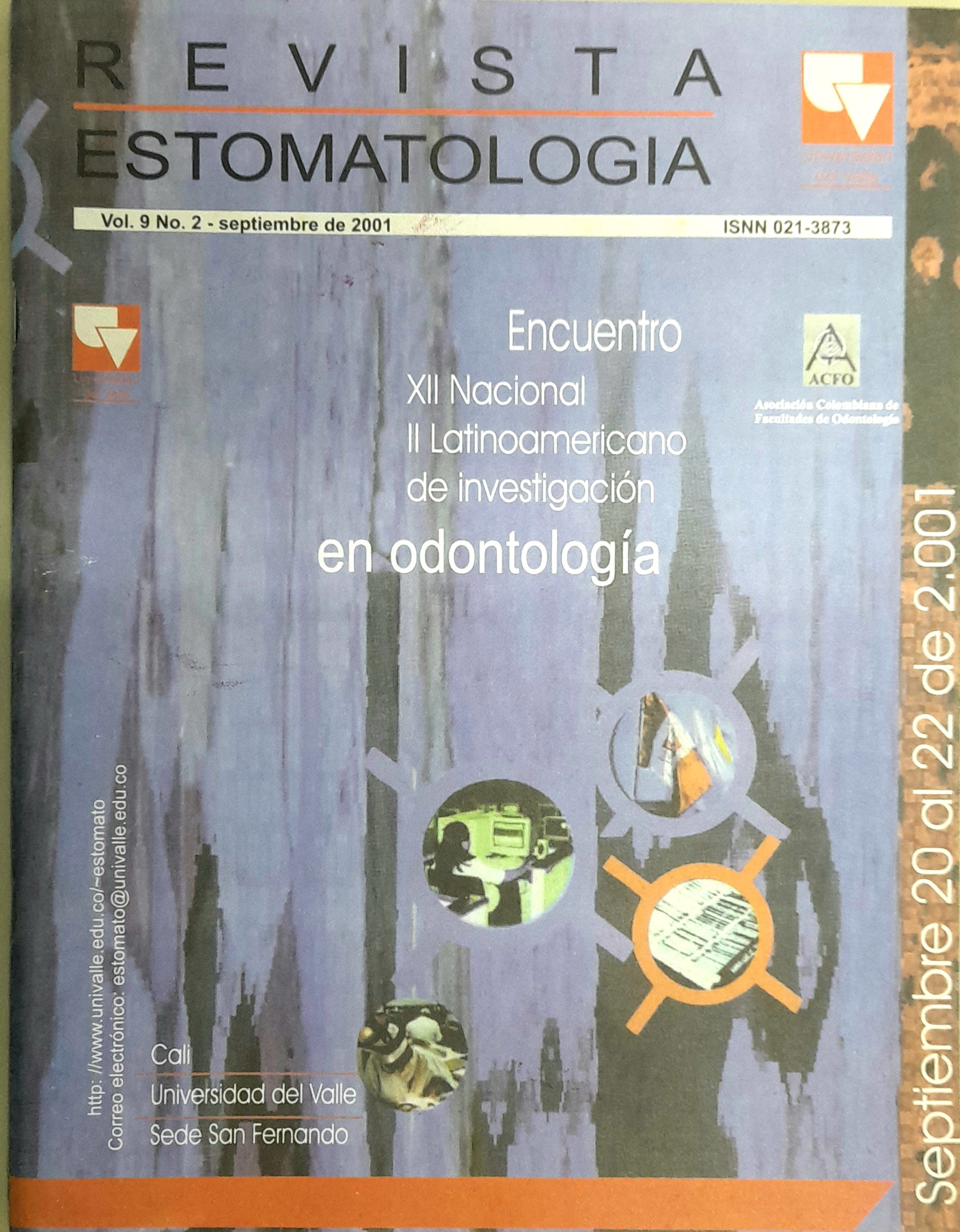Contaminación in vitro de cepillos dentales
Main Article Content
This study determined that toothbrushes could maintain viable and perhaps transmit to other farnily member 3 important oral pathogens. The toothbrushes were infected with an approximate inoculum of 5 million bacteria' s per mI of Actinobacillus actinomycetemcomitans, and Enterobacter cloacae, respectively and an infective dose 50 (ID 50) of Herpes Simplex type 1, (HSV -1). These microorganisms were placed directly on the tooth bristles at room temperature and subcultured at different times to establish individual microbial survival rates. Microorganisms were cultured at 3 hours, 24 hours, 96 hours, 5 days, 12 days, and 16 days after the initial toothbrush inoculation. A. actinomycetemcomitans, and HSV -1 resulted viable after 72 hours on toothbrushes. E. cloacae was viable as far as 16 days after the initial inoculation. The microbial viability was determined by subculture in TSBV and the identity of the microorganisms established by the bacterial colony morphology, rapid biochemical tests, and specie-specific polymerase chain reaction for A. actinomycetemcomitans. Viral viability was determined by visualization of the viral induced cytopathic effect on a cultured monolayer of embryonic lung fibroblasts from replicating HSV -l. Positive cultures were confmned by IFA assay against HSV -1. In conc1usion this study demonstrated in vitro that toothbrushes could act as a reservoir of microbes and maybe transmit important oral pathogens.
- Jorge-Enrique Soto-Franco, Heberth-Fernando Aldana, Juan-Manuel Navia, Melissa Peláez, Jorge Quisoboni, María-Alexandra O'Meara, Adolfo Contreras, High sensitive- C reactive protein, periodontal parameters and periodontal microbiota after scaling-root planning plus Azithromycin as treatment of Chronic Periodontitis: A Randomized Clinical Trial , Revista Estomatología: Vol. 24 No. 2 (2016)
- Liliana Arbeláez , Sandra Patricia Bravo, Carolina Chica, Adolfo Contreras, Adriana Marcela Ospina, Lina María Rentería, Luis Felipe Uribe, Microbiología de las lesiones apicales crónicas supurativas con fístula , Revista Estomatología: Vol. 11 No. 1 (2003)
- Adolfo Contreras, Pathogenesis of Periodontal Disease , Revista Estomatología: Vol. 2 No. 2 (1992)
- Marietta Celis, Adolfo Contreras, Carmén Elisa Vallejo, La amalgama dental: el material, interacciones con el ambiente oral y contribución a la carga corporal de mercurio , Revista Estomatología: Vol. 3 No. 1 (1993)
- Sandra Amaya, Maria Fernanda Bolaños, Adriana Jaramillo, Jorge Soto, Adolfo Contreras, Periodontal state and subgingival microbiota in preeclamptic women , Revista Estomatología: Vol. 13 No. 2 (2005)
- Adolfo Contreras R., Myriam Astudillo, Luz Helena Daza, Lina Maria García Z., Paola Andrea Gaviria, Beatriz Parra P., Heidy Liliana Rosales, Adriana Jaramiilo E., Contaminación microbiana de los cepillos dentales en pacientes con enfermedad periodontal , Revista Estomatología: Vol. 10 No. 1 (2002)
- Adolfo Contreras, Jorgen Slots, Antibiotic therapy of Periodontal Diseases: A modern context , Revista Estomatología: Vol. 9 No. 1 (2000)
- Jorge Enrique Soto Franco, Beatriz Parra Patiño, Adolfo Contreras Rengifo, Cultivo y caracterización in vitro de una línea celular de fibroblastos gingivales humanos , Revista Estomatología: Vol. 9 No. 1 (2000)
- Mónica Escudero, Javier Enrique Botero, Adolfo Contreras, Microbiología subgingival en pacientes HIV+ con y sin terapia anti-retroviral , Revista Estomatología: Vol. 11 No. 1 (2003)
- , , Editorial , Revista Estomatología: Vol. 14 No. 2 (2006)

This work is licensed under a Creative Commons Attribution-NonCommercial-NoDerivatives 4.0 International License.
Los autores/as conservan los derechos de autor y ceden a la revista el derecho de la primera publicación, con el trabajo registrado con la licencia de atribución de Creative Commons, que permite a terceros utilizar lo publicado siempre que mencionen la autoría del trabajo y a la primera publicación en esta revista.





